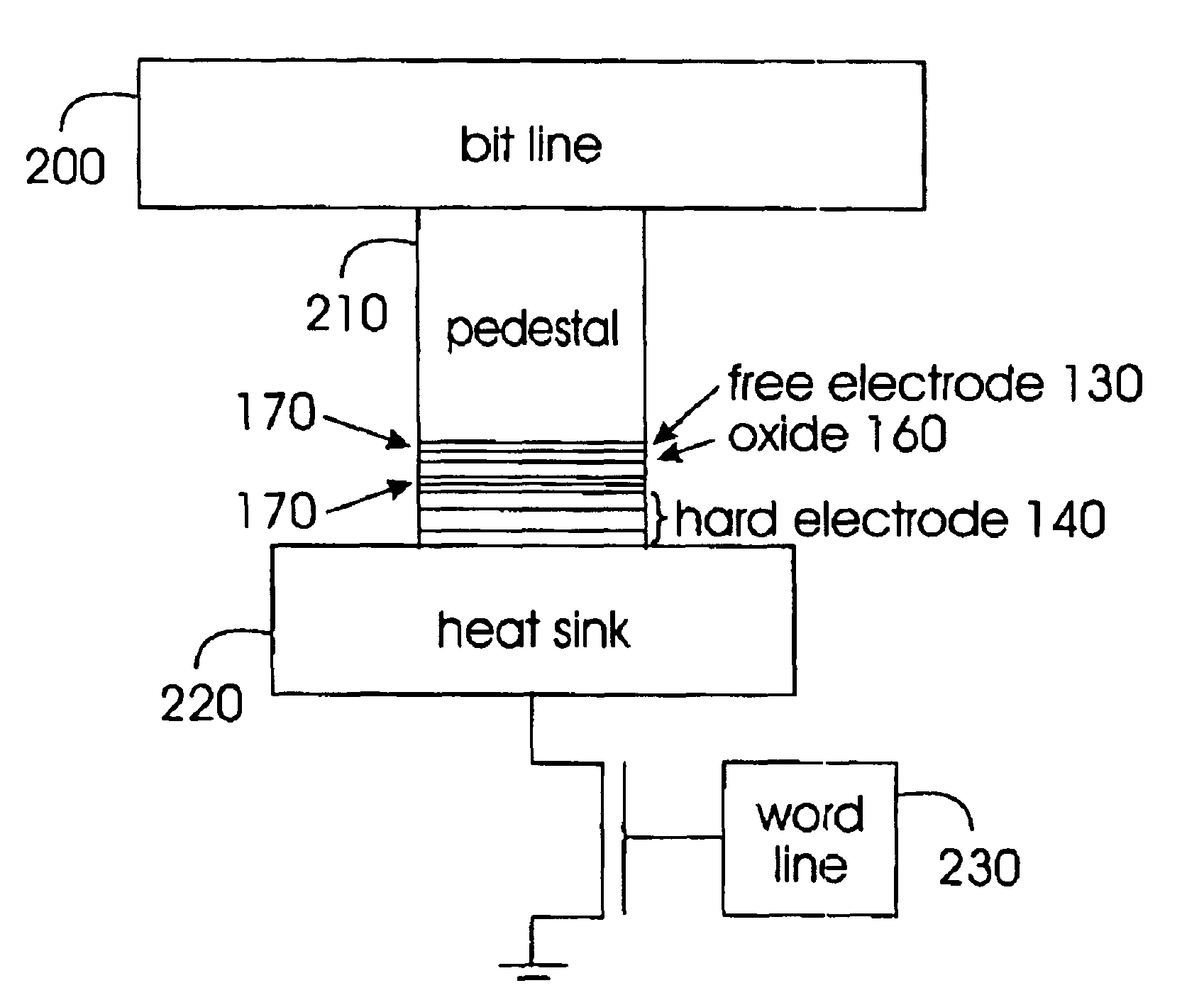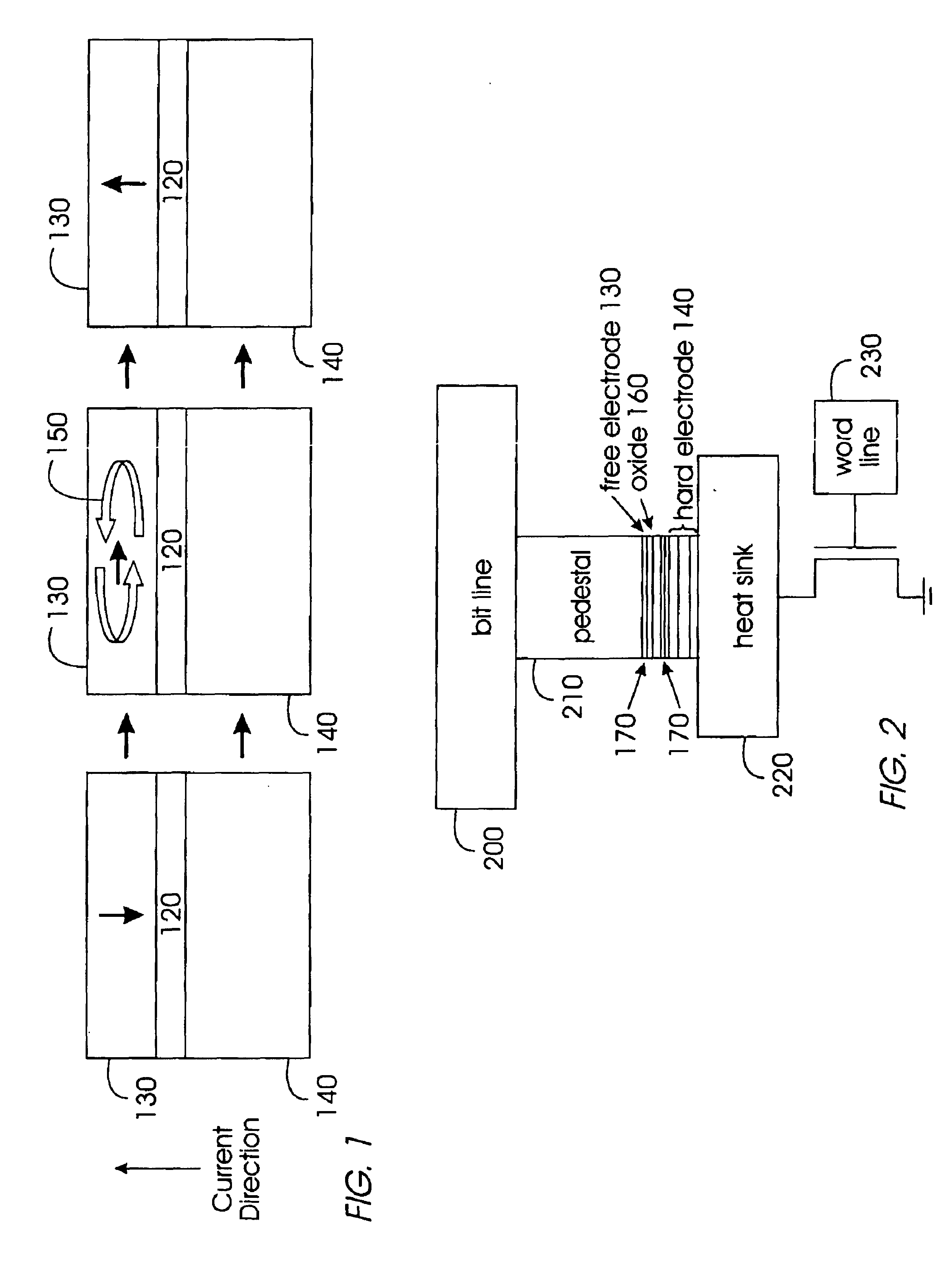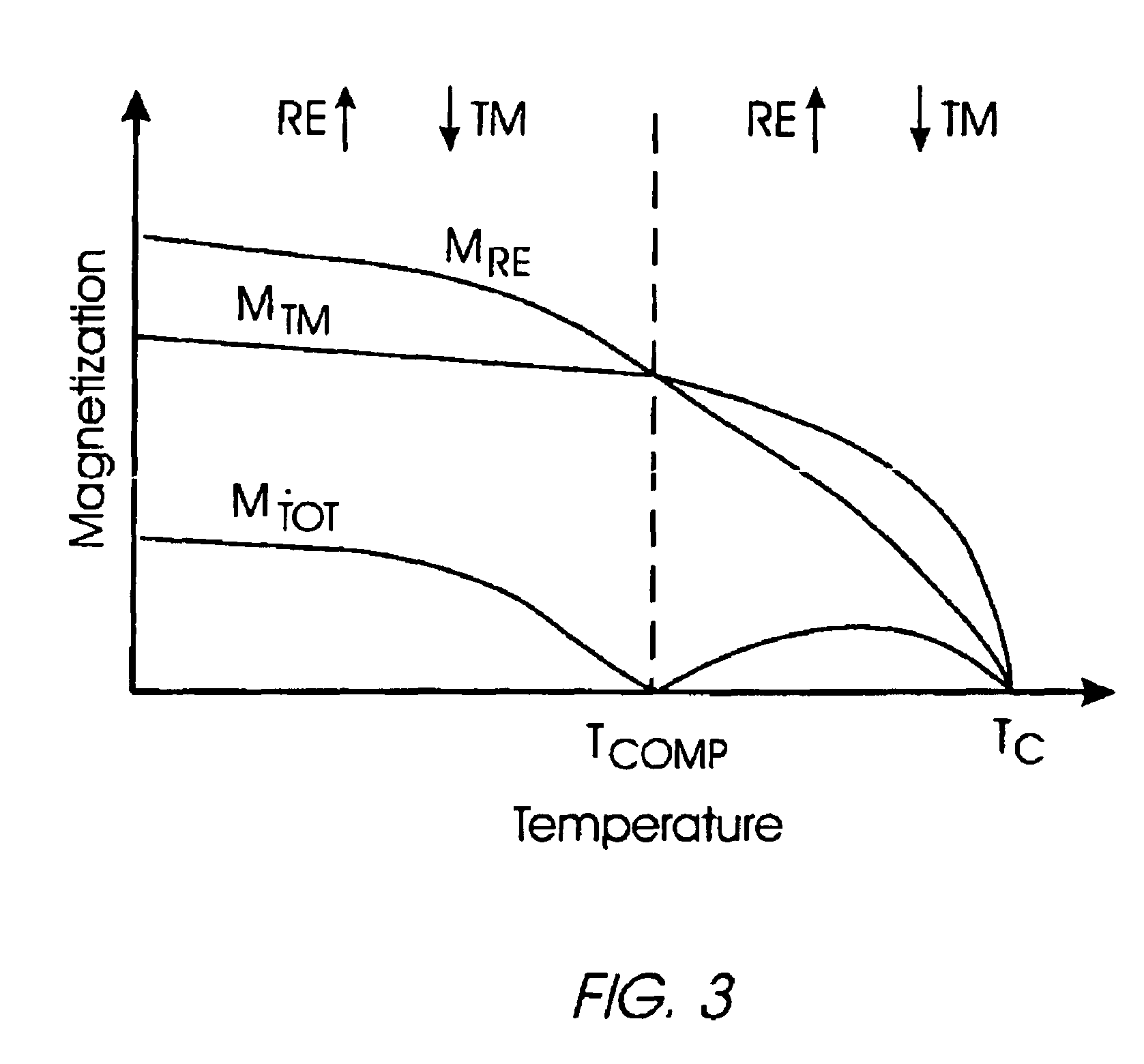Thermally-assisted magnetic writing using an oxide layer and current-induced heating
a technology of magnetic writing and oxide layer, applied in the field of current-induced heating, can solve the problems of limited scalability beyond the 65 nm technology node, unsuitable replacement for volatile memories such as dram or sram, and very slow flash speed
- Summary
- Abstract
- Description
- Claims
- Application Information
AI Technical Summary
Benefits of technology
Problems solved by technology
Method used
Image
Examples
Embodiment Construction
With the invention, thermally-assisted magnetic writing is accomplished by passing current through an ultra-low resistance oxide layer adjacent or near to a free electrode to be switched. Current-induced heating lowers the anisotropy of the free electrode and reduces the current density required for field or spin-transfer-based writing. In one embodiment of the invention, the resistance through the oxide layer in on the order 4 .OMEGA.-.mu.m.sup.2, the free electrode is comprising of Tb.sub.x Fe.sub.y based alloy, and switching is induced by spin-transfer torque with thermal assist. Thus, the invention provides a non-volatile MRAM memory device with a large number of read and write cycles, current-controlled switching, excellent scalability, ultra-fast switching speeds, very small bit cell, low voltage, low power, and optimal resistance for CMOS integration.
As mentioned above, the non-volatile memory chip market is today dominated by Flash technology. Unfortunately, Flash is very sl...
PUM
| Property | Measurement | Unit |
|---|---|---|
| melting temperature | aaaaa | aaaaa |
| resistance | aaaaa | aaaaa |
| resistance | aaaaa | aaaaa |
Abstract
Description
Claims
Application Information
 Login to View More
Login to View More - R&D
- Intellectual Property
- Life Sciences
- Materials
- Tech Scout
- Unparalleled Data Quality
- Higher Quality Content
- 60% Fewer Hallucinations
Browse by: Latest US Patents, China's latest patents, Technical Efficacy Thesaurus, Application Domain, Technology Topic, Popular Technical Reports.
© 2025 PatSnap. All rights reserved.Legal|Privacy policy|Modern Slavery Act Transparency Statement|Sitemap|About US| Contact US: help@patsnap.com



